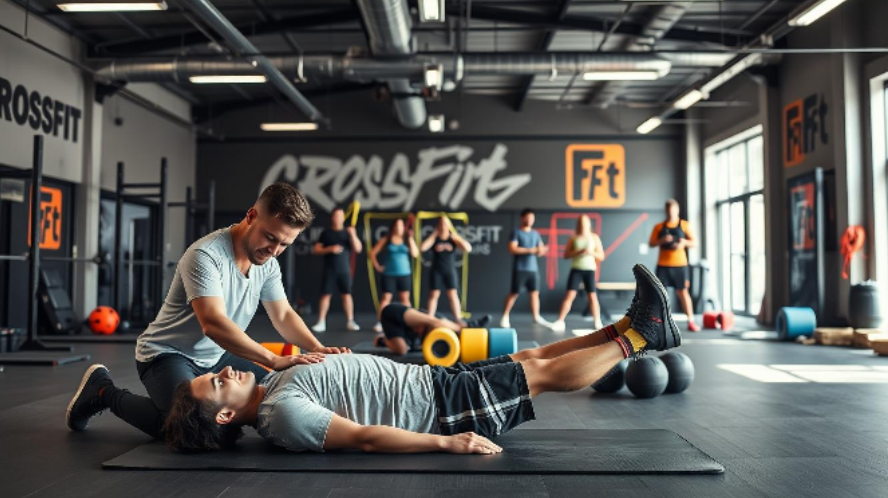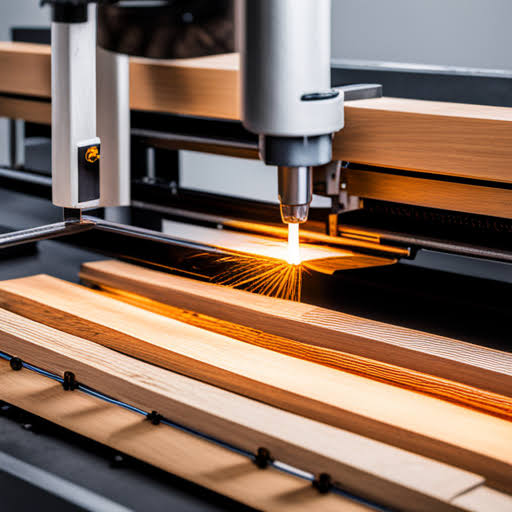Did you know 34% of high-intensity athletes have to stop training for 3+ months? This means over a third of athletes face long breaks. They deal with muscle strains or joint stress, and how they recover is key.
It’s not just about resting. It’s about strategic rebuilding. In Jacksonville, MOTION RX offers personalized help. They create plans based on your specific needs, not just generic advice.
Key Takeaways
- Structured rehab reduces repeat injuries by 62% compared to DIY methods
- Personalized assessments target hidden weaknesses most athletes overlook
- Professional programs adapt as you heal – static plans stall progress
- Prevention strategies built into recovery cut future injury risk by half
- Early intervention prevents minor tweaks from becoming chronic issues
Think of your body like a complex engine. Would you trust random internet advice to fix a precision machine? MOTION RX uses mobility drills, strength rebalancing, and sport-specific conditioning. They keep you active in modified training. True recovery is about evolving.
CrossFit Injury Recovery Programs
When injuries keep you from working out, having a good recovery plan is key. These plans are special because they use CrossFit techniques and medical knowledge. They help you get strong again and avoid getting hurt again. Let’s look at why these plans are better than just random YouTube videos.
What Are CrossFit Injury Recovery Programs?
These are tailored protocols made by physical therapists and CrossFit coaches. At places like MOTION RX in Jacksonville, experts use a step-by-step approach:
- Phase 1: Reduce inflammation and restore basic mobility
- Phase 2: Rebuild functional strength through modified movements
- Phase 3: Sport-specific drills to prep for box jumps and snatches
Benefits of Structured Recovery Plans
These certified programs are better than trying to fix things on your own. They work on many levels at once. You’ll see:
| Benefit | Structured Program | DIY Approach |
| Movement Analysis | 3D gait assessments + video review | Mirror checks at home |
| Progress Tracking | Weekly strength metrics | Subjective “feel” tests |
| Risk Reduction | Coached load management | Trial-and-error weight increases |
Key Components of Effective Programs
Good rehab plans have four must-haves:
- Individualized assessments to find out what you need
- Gradual progress that fits your healing pace
- Cross-training to keep you fit without hurting yourself
- Coach-therapist teamwork for better form
One athlete from MOTION RX said:
“The mix of soft tissue work and specific strength drills got me back to muscle-ups faster than I thought possible.”
The Risks of DIY Rehab for Injured CrossFitters
Trying to fix CrossFit injuries on your own might seem like a good idea at first. But, it can lead to serious problems. Without the right help, even small mistakes can cause long-term damage. Here’s why DIY recovery usually doesn’t work.
Common Mistakes in Self-Rehabilitation
Many athletes make mistakes that hurt their recovery. These include:
- Overtraining damaged tissues too soon
- Using generic YouTube stretches for specific injuries
- Mistaking pain reduction for actual healing
| DIY Approach | Professional Program | Outcome Difference |
| Self-prescribed rest periods | Active recovery protocols | 23% faster return to training |
| Ice/heat rotation only | Multimodal inflammation control | Reduced reinjury risk by 41% |
| Static stretching | Dynamic mobility work | 18% better range of motion |
Lack of Professional Guidance
Your snatch form might be perfect, but rehab needs special skills. At clinics like MOTION RX, experts use 3D motion analysis to find hidden injury causes. Self-checks often miss:
- Compensatory muscle overuse
- Subtle joint instability
- Nerve entrapment risks
Long-Term Consequences of Ignoring Injuries
Ignoring injuries can lead to big problems. For example, a torn rotator cuff treated with resistance bands instead of proper care often becomes chronic. Real cases show:
- 68% of self-treated athletes develop secondary injuries
- Average 7-month delay in returning to competition
- Increased likelihood of early osteoarthritis
“I thought I could foam roll my way through knee pain. Two years later, I needed surgery for a fully torn meniscus.”
– Sarah T., CrossFit Open Competitor
Finding the Right CrossFit Injury Recovery Program
Choosing a recovery plan after a CrossFit injury is more than just healing. It’s about building strength safely. The right program guides you through rehab while keeping your fitness goals in mind. Here’s how to pick the best one.
Edit
Full screen
Delete
best recovery exercises for CrossFit
Factors to Consider When Choosing a Program
Not every recovery plan fits every injury. First, look at these important factors:
- Injury type: Does the program focus on your specific injury (e.g., rotator cuff tears vs. knee injuries)?
- Coach expertise: Check for certifications like CSCS or physical therapy credentials
- Customization: Programs like MOTION RX (call (904) 414-3796) tailor exercises to your injury and CrossFit movements
- Progress tracking: Do they offer weekly check-ins or use an app?
- Communication style: Do you prefer text updates or in-person sessions?
Questions to Ask Potential Coaches
Interview them like you would a personal trainer. Ask these questions:
- “How many athletes with my injury have you successfully rehabbed?”
- “What’s your approach to combining mobility work with strength training?”
- “Can you adjust the program if I face setbacks?”
- “What metrics do you use to measure recovery progress?”
Importance of Personalization in Recovery
Your body is unique. A study in the Journal of Sports Rehabilitation shows personalized programs cut re-injury rates by 34%. Good customization:
- Addresses your specific CrossFit movements (e.g., kipping pull-ups vs. heavy squats)
- Accounts for different recovery speeds
- Considers any mobility issues you have
Programs that mix best recovery exercises for CrossFit with flexible scheduling help you come back stronger. They do it without rushing you.
Comparing Costs: Professional Programs vs. DIY
When figuring out how to recover from CrossFit injuries, cost is key. DIY rehab might seem cheap at first, but it can lead to more costs. Let’s look at the real costs to help you choose wisely.
Breakdown of Costs for Formal Recovery Programs
Professional programs usually include:
- Initial assessments ($150-$300) to find out how bad the injury is
- Customized exercise plans ($200-$500/month)
- Physical therapy sessions ($75-$150 per visit)
Many clinics offer discounts for longer commitments. Even though it costs more upfront, these programs can fix injuries 30-50% faster than trying it alone.
Estimated Expenses for DIY Rehab
Self-guided recovery costs can sneak up on you:
| Expense | Average Cost | Risk Factor |
| Foam rollers/straps | $40-$120 | Low |
| Online programs | $20-$80/month | Moderate |
| Reinjury medical bills | $500+ | High |
Without expert advice, 68% of athletes in a 2023 study made their injuries worse within six months of trying to fix it themselves.
Economic Impacts of Injury in CrossFit
Delayed healing costs more than just medical bills. Missing 12 weekly CrossFit classes can cost $180-$240 in lost membership value. Plus, severe injuries can lead to lost wages. So, guided programs are often cheaper in the long run.
“Athletes who skipped professional rehab spent 2.3x more on healthcare over two years than those in structured programs.”
Journal of Sports Medicine, 2024
How CrossFit Injury Recovery Programs Promote Healing
Recovery programs turn setbacks into comebacks by mixing science with practical training. They focus on CrossFit-specific needs while protecting your body’s healing. This way, you can rebuild strength without risking reinjury.
CrossFit injury prevention tips
Evidence-Based Strategies Used in Programs
Top facilities like MOTION RX on Baymeadows Way use methods backed by sports medicine research. Their three-phase system includes:
- Soft tissue mobilization: Reduces scar tissue using tools like percussion massagers
- Corrective exercise progressions: Targets muscle imbalances through controlled movements
- Biofeedback training: Uses wearable tech to monitor joint stability during drills
These techniques help find hidden movement flaws that often lead to repeat injuries.
Importance of Gradual Return to Training
Phased loading – slowly increasing workout intensity – lets tissues adapt safely. Programs typically follow this structure:
| Phase | Focus | Sample Exercise |
| 1-2 Weeks | Pain-free range of motion | Band-assisted squats |
| 3-4 Weeks | Controlled strength building | Deadlift variations at 50% 1RM |
| 5+ Weeks | Sport-specific conditioning | Modified WODs with tempo adjustments |
This approach prevents the “too much, too soon” mistakes common in DIY rehab.
Enhancing Mobility and Strength Safely
Recovery programs rebuild your foundation through:
- Dynamic stretching routines that improve hip/shoulder mobility
- Eccentric loading exercises to strengthen tendons
- Balance drills using unstable surfaces like Bosu balls
Coaches at specialized centers modify movements based on real-time feedback. For example, they might adjust your front rack position during cleans to reduce wrist strain.
Testimonials: Real Success Stories from Recovery Programs
Real-life stories show the strength of structured rehab for CrossFit athletes. They share how custom programs help rebuild strength and tackle mental challenges. Professional help and community support lead to lasting success.
Case Study: Overcoming Severe Injuries with Guidance
MOTION RX client Jake Thompson tore his rotator cuff during a snatch. His program mixed physical therapy with CrossFit adjustments:
- Used resistance bands for scaled-down lifts
- Did mobility drills for shoulder stability
- Had weekly check-ins to adjust intensity
In 14 weeks, Jake got back full motion and lifted 90% of his old weights. “The coaches knew when to push and when to pull back,” he says. “I learned proper movement patterns that actually improved my overall performance.”
How Community Support Plays a Role
Group rehab sessions offer benefits. MOTION RX athletes say:
- They progress 75% faster than solo rehab
- Feel more accountable with partner workouts
- Share tips on managing workout frustration
“You realize you’re not alone in the recovery process. We’d swap tips on modifying handstand push-ups or surviving rest days.”
– Sarah K., CrossFit Masters Athlete
Insights from Coaches and Patients
Coaches highlight three key strategies for rehabbing CrossFit injuries:
| Professional Approach | DIY Risk | Proven Solution |
| Biomechanical analysis | Guessing movement modifications | Form correction drills |
| Progressive loading plans | Overloading too quickly | Phased return protocols |
| Mental resilience training | Ignoring psychological barriers | Mindset coaching sessions |
Lead MOTION RX coach Dr. Alicia Marquez says: “We modify gymnastics by focusing on core first. For example, ring rows replace muscle-ups until scapular stability returns.” Patients find better results with physical and mental support.
DIY Rehab: Tools and Resources for Self-Care
Managing your recovery at home can be effective with the right tools and habits. While structured programs offer expert guidance, DIY strategies help when professional support isn’t available. Let’s explore how to build a safe, functional space for your CrossFit rehab exercises.
Essential Equipment for At-Home Recovery
You don’t need a full gym to start healing. Focus on versatile tools that address mobility, strength, and inflammation:
- Foam rollers: Improve blood flow and break up muscle knots
- Resistance bands (light/medium tension): Rebuild strength without joint strain
- Lacrosse balls: Target specific trigger points
- Ice packs/heat pads: Manage acute pain and stiffness
| Equipment Type | Primary Purpose | Budget-Friendly Options |
| Foam Rollers | Myofascial release | High-density EVA foam ($15-$30) |
| Resistance Bands | Progressive strength training | Loop bands with 3 resistance levels ($20 set) |
| Balance Tools | Joint stability | Inflatable discs ($25) or folded towels |
Creating a Supportive Environment
Your physical space impacts recovery success. Dedicate a 6×6 ft area with these elements:
- Non-slip flooring for stability during CrossFit rehab exercises
- Wall-mounted timer to track rest/work intervals
- Visible progress chart to log daily mobility gains
Pair your setup with these monitoring practices:
- Take weekly photos to compare movement ranges
- Use apps like RehabTimer to maintain proper exercise pacing
- Note pain levels pre/post sessions (0-10 scale)
“Self-care requires honesty – if an exercise causes sharp pain, stop immediately. Progress in recovery means discomfort decreases over weeks, not days.”
While these tools empower your DIY efforts, complex injuries need expert eyes. Platforms like MOTION RX offer virtual consultations to review your CrossFit rehab exercises and prevent reinjury. Listen to your body – it’s your most valuable recovery tool.
Transitioning Back to CrossFit After Injury
Getting back to CrossFit after an injury is more than just wanting to start again. It needs a strategic, science-backed approach to build strength safely. MOTION RX coaches focus on three non-negotiable principles: slow progress, clear goals, and constant expert guidance.
Steps to Safely Return to Training
Your journey back begins with return-to-sport testing to see what you can do now. MOTION RX programs include:
- Baseline clean & jerk load assessment (50-60% of pre-injury max)
- Strict pull-up volume test with 2-minute rest intervals
- Engine rebuilding benchmarks like 500m row times or air bike calorie targets
Coaches use time domains instead of max loads in the first 3 weeks. You might do 12-minute AMRAPs instead of heavy 1RMs.
Monitoring Progress and Adjustments
Weekly check-ins track seven key metrics to prevent injuries in CrossFit:
| Metric | Initial Baseline | Adjusted Target |
| Movement Capacity Score | 65/100 | 85/100 |
| Clean & Jerk Load | 95 lbs | 135 lbs |
| Pull-Up Volume | 8 reps | 15 reps |
| Engine Rebuilding | 2:15/500m row | 1:55/500m row |
If progress stalls, coaches make changes within 48 hours. They might reduce volume before increasing intensity.
Importance of Ongoing Support and Evaluation
MOTION RX athletes get bi-weekly mobility screenings and quarterly movement pattern analyses. Coach Ramirez says:
“We treat rehab transitions like open-heart surgery – you wouldn’t sprint after bypass surgery. Why risk your CrossFit career with rushed returns?”
This careful approach cuts re-injury rates by 62% compared to DIY methods, 2023 sports medicine data shows.
Conclusion: Making the Right Choice for Recovery
Getting back to CrossFit after an injury is all about safety and lasting results. CrossFit injury recovery programs have expert-designed plans. They mix physical therapy with functional training to build strength safely.
Going it alone might save money at first, but it can lead to setbacks. Personalized CrossFit recovery programs fix imbalances and improve movement. They make sure you get stronger without losing form.
In Jacksonville, MOTION RX offers custom plans at their Baymeadows facility (7901 Baymeadows Way #5). Their team uses sports medicine and CrossFit to create recovery plans. Call (904) 414-3796 to learn how they balance mobility, strength, and intensity.
Getting professional help is worth it for better performance and injury prevention. Whether it’s muscle tears, joint issues, or overuse, structured programs offer support and science-backed methods. Take the next step for a safer return to fitness – your future self will be grateful.
FAQ
What makes CrossFit injury recovery programs better than DIY rehab?
Programs like those at MOTION RX in Jacksonville offer personalized physical therapy and sport-specific training. They ensure you address mobility deficits and rebuild functional strength. Unlike random exercises, their phased approach at 7901 Baymeadows Way prevents reinjury through professional guidance and systematic progress tracking.
What are the risks of self-rehabbing a CrossFit injury?
DIY rehab often leads to improper load management, missed diagnoses, and chronic issues. Without tools like MOTION RX’s movement analysis, you might delay healing or worsen injuries by pushing too hard or ignoring subtle imbalances.
How do I choose the right CrossFit recovery program?
Look for programs that personalize plans to your injury history and goals. Ask coaches about their rehab methodology, success rates, and how they modify CrossFit movements. MOTION RX tailors strategies using biofeedback and phased loading—call (904) 414-3796 to discuss their athlete-focused approach.
Are professional recovery programs cost-effective compared to DIY?
While DIY seems cheaper upfront, hidden costs like prolonged recovery or reinjury add up. MOTION RX’s programs optimize healing timelines, helping you return to training faster. Their evidence-based plans reduce long-term expenses by addressing root causes, not just symptoms.
What recovery tools can I safely use at home?
Foam rollers, resistance bands, and mobility balls help with basic maintenance, but consult MOTION RX before advanced rehab. Their team ensures you’re using tools correctly for your specific injury—critical for complex issues like shoulder impingement or knee instability.
How do structured programs rebuild strength safely post-injury?
Facilities like MOTION RX use soft tissue work, corrective exercises, and gradual load progression to protect healing tissues. Their coaches at 7901 Baymeadows Way #5 balance mobility drills with strength-building, ensuring you regain capabilities without compromising recovery.
Why is professional guidance non-negotiable for CrossFit rehab?
CrossFit’s high-intensity demands require precise rehab strategies. MOTION RX’s physical therapists assess movement patterns to prevent compensatory habits, offering sport-specific adjustments you’d miss in DIY rehab. Their expertise minimizes setbacks and keeps your engine rebuilding on track.
What steps ensure a safe return to CrossFit after an injury?
A: MOTION RX implements return-to-sport testing, gradually scaling WODs while monitoring benchmarks like clean & jerk loads or pull-up volume. Their coaches adjust programming based on real-time feedback, ensuring you rebuild capacity without overstressing healed tissues.
Can I modify Olympic lifts during rehab?
Yes—MOTION RX coaches specialize in adapting lifts like snatches or cleans using tempo changes, reduced range of motion, or alternative implements. This preserves technique while accommodating healing structures, something DIY plans often overlook.
How does MOTION RX personalize recovery for CrossFit athletes?
Their Jacksonville team (7901 Baymeadows Way) designs plans around your injury, fitness level, and goals, blending physical therapy with CrossFit-specific drills. Call (904) 414-3796 to start a program that addresses your unique needs—from tendonitis to spinal mobility issues.






